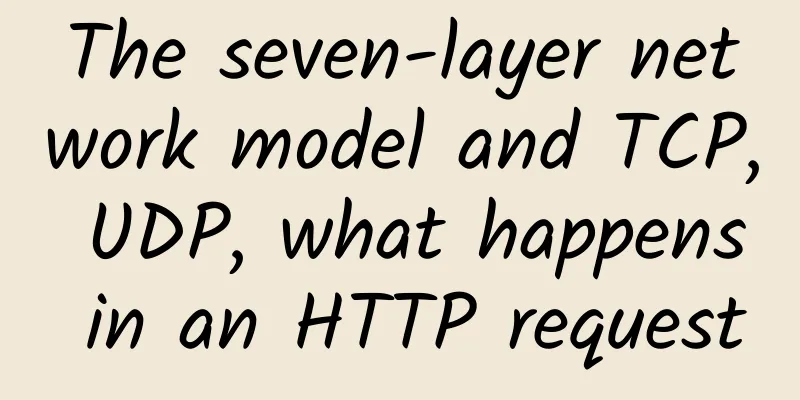What is QoS technology? What are its functions?

|
QoS (Quality of Service) refers to a network's ability to use various basic technologies to provide better service capabilities for specified network communications. It is a network security mechanism and a technology used to solve problems such as network delays and congestion. QoS guarantee is very important for networks with limited capacity, especially for streaming multimedia applications such as VoIP and IPTV, because these applications often require a fixed transmission rate and are sensitive to delay. Network resources are always limited. As long as there is competition for network resources, there will be requirements for quality of service.
Service quality is relative to network services. When ensuring the service quality of a certain type of service, it may be damaging the service quality of other services. For example, when the total network bandwidth is fixed, if a certain type of service occupies more bandwidth, the bandwidth available to other services will be less, which may affect the use of other services. Therefore, network managers need to reasonably plan and allocate network resources according to the characteristics of various businesses so that network resources can be used efficiently. QoS Service Model Usually QoS provides the following three service models: Best-Effort service (best effort service model), Integrated service (Int-Serv for short), Differentiated service (Diff-Serv for short) (1) The Best-Effort service model is a single service model and the simplest service model. For the Best-Effort service model, the network sends messages as much as possible. However, it does not provide any guarantees for performance such as latency and reliability. The Best-Effort service model is the default service model of the network, which is implemented through a FIFO (first in first out) queue. It is suitable for most network applications, such as FTP, E-Mail, etc. (2) Int-Serv Service Model Int-Serv is an integrated service model that can meet multiple QoS requirements. This model uses the Resource Reservation Protocol (RSVP), which runs on each device from the source to the destination and can monitor each flow to prevent it from consuming too many resources. This system can clearly distinguish and guarantee the service quality of each business flow, providing the most fine-grained service quality distinction for the network. However, the Inter-Serv model has high requirements for equipment. When the number of data flows in the network is large, the storage and processing capabilities of the equipment will encounter great pressure. The Inter-Serv model has poor scalability and is difficult to implement in the Internet core network. (3) Diff-Serv service model Diff-Serv is a multi-service model that can meet different QoS requirements. Unlike Int-Serv, it does not need to notify the network to reserve resources for each service. Differentiated services are easy to implement and have good scalability. Comparison of three service models: The location of common QoS technologies in the network
QoS function 1. Grouping Classifiers and Labelers Routers at the network boundary use a classifier function to mark packets that identify a particular class of traffic based on one or more fields in the TCP/IP packet header, and then use a marker function to mark the classified traffic, which is accomplished by setting the IP precedence field or the Differentiated Services Code Point (DSCP) field. 2. Communication rate management The service provider uses the policing function to measure the customer traffic entering the network and compare it to the customer's traffic profile. At the same time, the enterprise connected to the service provider's network may need to use traffic shaping to measure all of its traffic and send it out at a constant rate to comply with the service provider's policing function. Token bucket is a common traffic measurement scheme. 3. Resource Allocation First-in-first-out (FIFO) scheduling is a traditional queuing mechanism widely used by current Internet routers and switches. Although FIFO scheduling is simple to deploy, it has some fundamental problems in providing QoS. It does not provide a means to prioritize delay-sensitive communications and move them to the head of the queue. All communications are treated exactly the same, and there is no concept of communication differentiation or service differentiation. For a scheduling algorithm to provide QoS, it must at least be able to distinguish between different packets in a queue and know the service level of each packet. The scheduling algorithm decides which packet in the queue to process next, and the frequency with which a flow packet is served determines the bandwidth or resources allocated to the flow. 4. Congestion avoidance and packet discard strategies In traditional FIFO queuing, queue management is implemented by discarding all arriving packets when the number of packets in the queue reaches the maximum length of the queue. This queue management technique is called tail drop, which only signals congestion when the queue is completely full. In this case, no aggressive queue management is used to avoid congestion, nor is the queue size reduced to minimize queuing delay. Aggressive queue management algorithms allow routers to detect congestion before the queue overflows. 5. QoS signaling protocol RSVP is part of the IETF Intserv architecture that provides end-to-end QoS on the Internet. It allows applications to make service quality requirements for each flow to the network. Service parameters are used to quantify these requirements for management and control. 6. Exchange The main function of a router is to quickly and efficiently switch all incoming traffic to the correct output port and next hop address based on the information in the forwarding table. Although the traditional cache-based forwarding mechanism is efficient, it has scalability and performance issues because it is driven by communication, and it increases cache maintenance work and reduces switching performance when the network is unstable. The topology-based forwarding method solves the problems existing in the cache-based forwarding mechanism by establishing a forwarding table that is exactly the same as the router's routing table. 7. Routing Traditional routing is based only on the destination and routes packets on the shortest path according to the routing table. This is not flexible enough for some network situations. Policy routing is a QoS function that allows users to route packets not based on the destination, but based on various user-configurable packet parameters. Current routing protocols provide shortest path routing, which selects routes based on metrics such as management cost, weight, or number of hops. Packets are transmitted according to routing tables without any knowledge of the requirements of the flow or the resources available on the route. QoS routing is a routing mechanism that takes into account the QoS requirements of the flow and has some knowledge of the resources available on the network when selecting routes. |
<<: Smart Manufacturing under 5G: A New Model of Smart Factory Automation
>>: Looking Ahead to 2020: 8 Enterprise Technologies That Will Be Impactful
Recommend
5 predictions for 5G adoption in 2021 and beyond
If we roll up some of the predictions about the f...
2.4G or 5G? Do you know the difference between Wi-Fi frequency bands?
Overview The 2.4G and 5G mentioned in the title r...
Little-known tips for ordinary users to install broadband at home
In the past two years, broadband has become a mus...
User says | IPL helps medical experimental training to get on the fast track
Anhui Medical College is a public general college...
What is the difference between a free SSL certificate and a paid one?
With the popularity of SSL certificates, CA agenc...
ServerGigabit: Malaysia VPS monthly payment starts from US$9.59, 100M unlimited traffic
I received two emails from ServerGigabit. The mer...
The ultimate solution to the problem that Github cannot display images
[[379338]] Preface Not long ago, I encountered th...
Donghua's anti-unified prescription system helps hospitals develop an "indestructible body"
Recently, a piece of news that "Apple China ...
Global users' views on 5G: Five keys to commercial success
Recently, Ericsson Consumer Lab released the &quo...
5G is "close" to us, how far is it from you? The Ministry of Industry and Information Technology gives the answer
How long will it take for 5G to become popular? R...
Single-mode fiber: What's next?
As the demand for high-speed, reliable networks c...
Programmers learn network hubs and switches
From the perspective of network implementation, n...
Interpretation of the "Three-Year Special Action Plan for Improving IPv6 Traffic (2021-2023)"
The large-scale deployment and application of IPv...
HOSTEROID: €14/year - 2GB/25GB/750GB@1Gbps/UK (London) VPS
HOSTEROID recently released two special annual pa...









